
Help yourself to our creative, hands-on activity ideas for teaching Anne of Green Gables. We've been teaching children's literature in experiential ways since 2010, and we'd love to help you engage and inspire YOUR kids!
It's astounding how much they'll learn while they're "just" having fun!
When kids get to do things the characters did, they GET IT. With a little guidance, they know why that experience matters. They understand its role in the story, and what secret meaning it has. They see that literature is clever and cool. They get how fun great books are—and they want to read more.
Read on for:
Creative Teaching Ideas
Prep Tips & Printables
FAQ & Support
Learning Links
Our activities are perfect for homeschoolers, co-ops, classrooms, libraries, book clubs, and families.
for use with some of the activity ideas on this page
for teaching Anne of Green Gables by L.M. Montgomery
LitWits makes a small commission (at no extra cost to you) on supplies or books you buy through our Amazon affiliate links.
Creative Teaching Idea #1
A table of objects pulled “straight from the story” can lead to all sorts of wonderful discussions and wide-eyed, “aha!” moments. Throughout your teaching experience of this book, pause to discuss and/or pass around relevant props. Items unique to the setting help kids understand “what that was like,” and those symbolic of themes help kids literally grasp big ideas.
Anne had brought her slate down on Gilbert's head and cracked it—slate not head—clear across. —Ch 15
“I know exactly what to do for croup. [...] Just wait till I get the ipecac bottle—you mayn’t have any at your house." —Ch. 18
"We had reading and geography and Canadian history and dictation today." —Ch 15
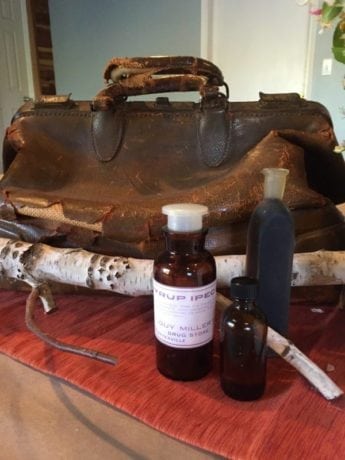
. . . she stood up, grasping with one thin brown hand the handle of a shabby, old-fashioned carpet-bag; the other she held out to him. —Ch. 2 (check your local thrift store or eBay)
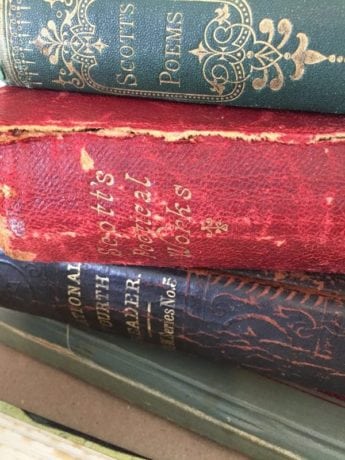
The cows swung placidly down the lane and Anne followed them dreamily repeating aloud the battle canto from Marmion—which had also been part of their English course the preceding winter and which Miss Stacy had made them learn off by heart—and exulting in its rushing lines and the clash of spears in its imagery. —Ch 24
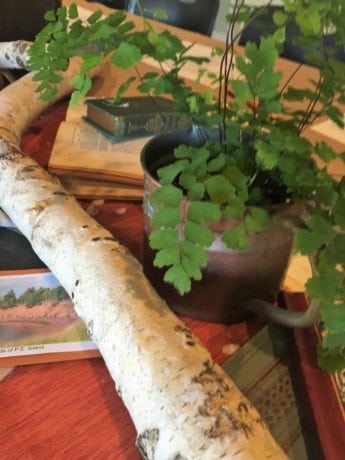
Below the garden a green field lush with clover sloped down to the hollow where the brook ran and where scores of white birches grew . . . upspringing airily out of an undergrowth suggestive of delightful possibilities in ferns and mosses and woodsy things generally. —Ch 4
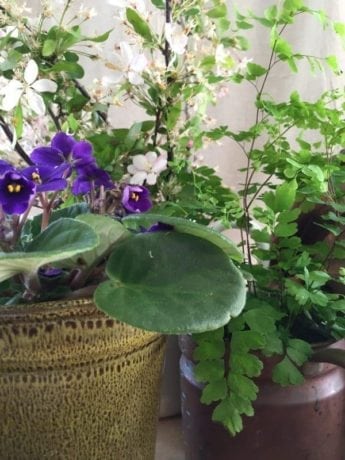
After the Mayflowers came the violets, and Violet Vale was empurpled with them. Anne walked through it on her way to school with reverent steps and worshiping eyes as if she trod on holy ground. —Ch 20

"Will you let me hold the brooch for one minute, Marilla? Do you think amethysts can be the souls of good violets?" —Ch 13 (check your local thrift store or eBay or Etsy)

. . .she had fallen into wide-eyed reverie, looking out past the boughs of the Snow Queen, once more bestarred with its tufts of blossom. —Ch 20
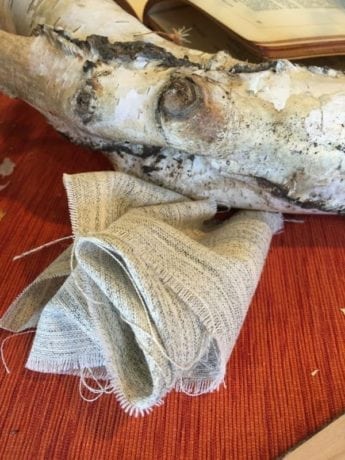
...an ordinary observer would have seen this: A child of about eleven, garbed in a very short, very tight, very ugly dress of yellowish-gray wincey. —Ch 2
LitWits makes a small commission (at no extra cost to you) on supplies or books you buy through our Amazon affiliate links.
Creative Teaching Idea #2
We think it's important to know where your books have come from. After all, without L.M. Montgomery, we wouldn't have the wonderful story of Anne of Green Gables! This activity introduces your kids to the author through our short, kid-friendly video biography, and lets them practice some note-taking, too.
Photo of Lucy Maud Montgomery, age 10 in 1884, on Wikipedia (public domain)
Start your experience of this story by introducing the kids to the author, so kids can see the connections between her lived story and her written story.
Below is our kid-friendly biography of L.M. Montgomery—it's a great discussion starter. If you'd like a worksheet for author note-taking and conversation-starting, there's one in our printables set.
For further information
We encourage you to read through the interviews and biographical articles about L.M. Montgomery in our Learning Links.

Creative Teaching Idea #3
Kids love finding out that the setting of Anne of Green Gables is a real place. In this activity, kids take a video tour of Prince Edward Island, then locate the island and its capital on a map. They also get to rename some neighboring islands that have really awful names, just like Anne would.
Anyone who reads Anne of Green Gables imagines going there and seeing the "White Way of Delight" and the other beautiful places Anne loved. What a fantastic field trip that would be! We can at least get there virtually.
Start inside Green Gables with this quick but lovely unnarrated tour of the house, or take the more detailed tour below it:
Then step outside by browsing this "All Things Anne" tourism page , which has lots of photos of the places mentioned in the story.
Next, pull back from "Avonlea" (Cavendish) to view this very short overview of the island province
from Canadian Geographic:
Then have the kids find Prince Edward Island off the coast of Nova Scotia, either on the web or on a globe. (Or use the setting worksheet in our printables set, which includes a printed map.)
Finally, check out the other islands in the province, and have the kids come up with some better names for those that sound like their namer was really tired that day. You know Anne would never have let Hog Island, Fish Island, and Bird Island go unrenamed. Make sure the kids rename them with some fabulously imaginative names that will elevate them.
For more imaginative practice elevating ordinary names to magnificent ones, use the creative writing worksheet "What's in a Name?" in our printables set.
LitWits makes a small commission on supplies or books you buy through our Amazon affiliate links.
Creative Teaching Idea #4
It can be hard for kids to connect to characters from the past. But pull Mrs. Lynde out of the story and plop her into a modern scenario, and kids "get her" right away—they know just what she'd do! In this activity, kids get to predict and act out characters'' reactions to being in new, modern situations.
The point of this activity is that kids instinctively know what that book character person would say and do. That's a valuable life lesson (what people expect from you depends on your actions) and it demonstrates a key writing skill (having your character act in certain ways helps readers know what to expect from him/her.
(By the way, this activity pairs well with the characterization worksheet "Show, Don't Tell" in our printables set.)
PREP
Type up four scenarios, one per page, wherein story characters are placed in a modern situation that would bring out their most notable characteristics. For instance, Anne's imagination, Matthew's shyness, Marilla's strictness, and Mrs. Lynde's know-it-allness. Or just use the four scenarios in our printables set! (It also includes some charade prompts as an easier alternative for younger kids.) These are our scenario titles, for inspiration:
Matthew faces thirteen Miss Canada contestants!
Anne gets stuck in Walmart!
Mrs. Lynde meets the press!*
Marilla gets a laptop!
Make two copies of each scenario—one for you, and one for each scenario's acting team.
Gather some props. This activity is all the more fun if you have a few simple costume items on hand—a wig, a hat, some spectacles will add to the hilarity and drama.
SETUP
Explain to the kids that they'll be imagining how a character from Anne of Green Gables would respond to being placed in a modern, new situation.
Tell them that for each scenario, volunteer actors will be a narrator, a character from the story, and one or more supporting characters. Those choosing to play “modern” characters and narrators just need to read their lines with dramatic flair that would make Anne proud. Those who take the part of a character from the book, their challenge is to get “into the shoes (and head)” of that character and respond as he or she would.
DIRECTIONS
For each scenario, take volunteers. We’re always surprised at how many kids are eager to get on stage and be a “story somebody,” but if you don't get many takers, you might reassure them they won't have to memorize their lines, just read or imagine them aloud.
Hand out a prompt (or our prompt printout) to each scenario's team. Give them a chance to read it and get their heads around the situation and what they'll be doing and saying. Then have each team cut their scenario apart so each actor is holding his or her part to read.
Make sure the actors understand the setup, so they know what to pretend and where to sit or stand.
Then let them act it out—the more hammyness and drama the better! If the "book characters" get stuck when trying to respond, pause to brainstorm together how their character would respond. It’s fine to help each other out and great to cheer each other on!
Help them get the point—that whether fictional or real, it's character that makes someone knowable and predictable, for better and for worse. Ask the kids what they think makes them predictable, and how they feel about that!
Creative Teaching Idea #5
In searching for collage images and words that remind kids of Anne of Green Gables, they come to understand that if something leaps out at them, there must be a connection to it in the story—they just have to follow their train of thought to find it. In this activity, they layer their printed finds to create a unique work of art that symbolizes deeper meanings, like a visual poem.
SUPPLIES
card stock or, if you're collecting papers for this workshop all in one place, pocket folders
a good supply of kid-friendly magazines, such as home decorating and gardening magazines
1-2” paintbrush for painting Mod Podge® on the final collage.
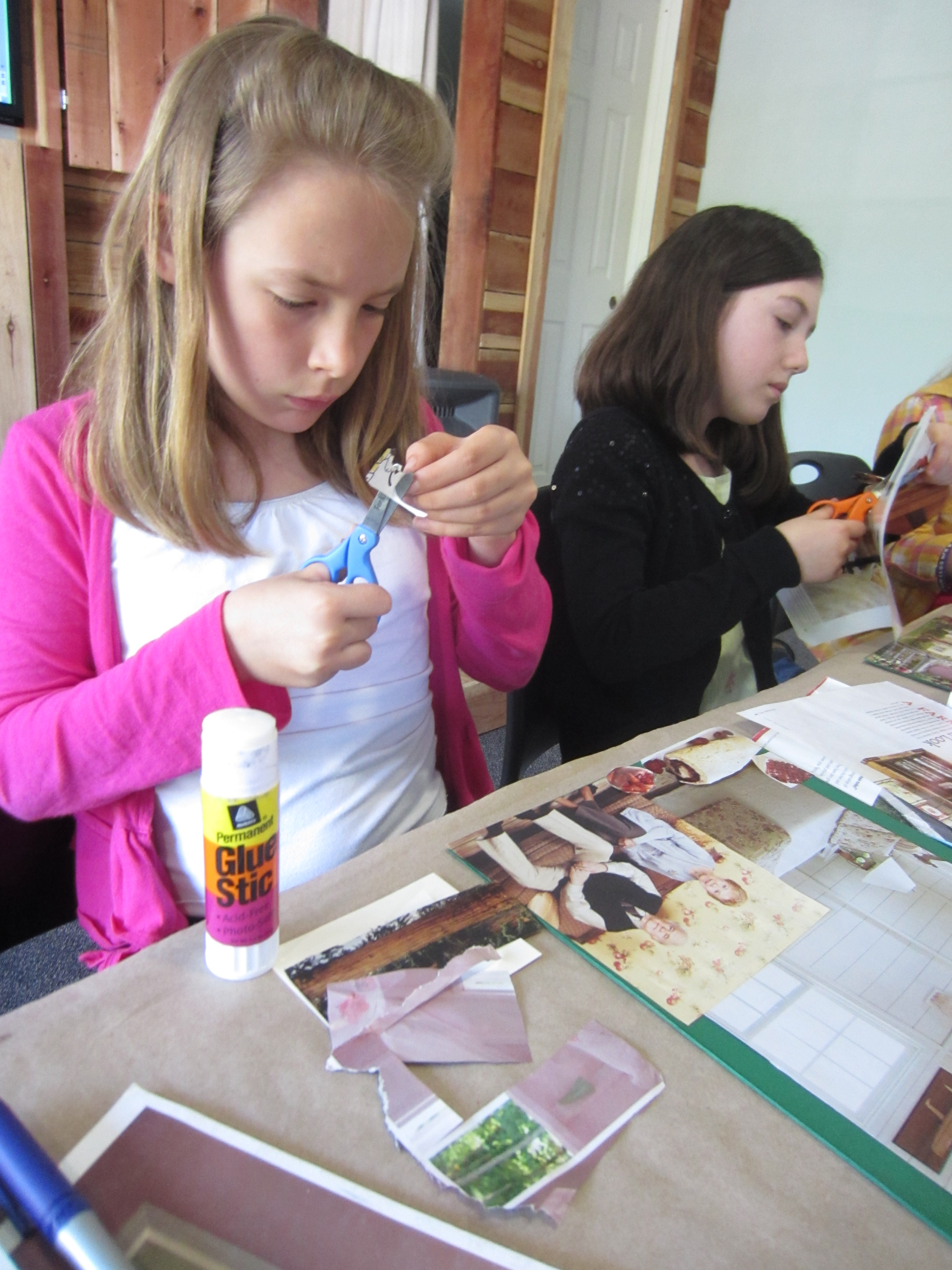
DIRECTIONS
Explain to the kids that they’ll be looking for any images or words that remind them of the story, then cutting them out and gluing them onto their folders to give a layered effect. They don’t need to replicate scenes or find exact images of characters – just pictures and phrases or words that suggest the book.
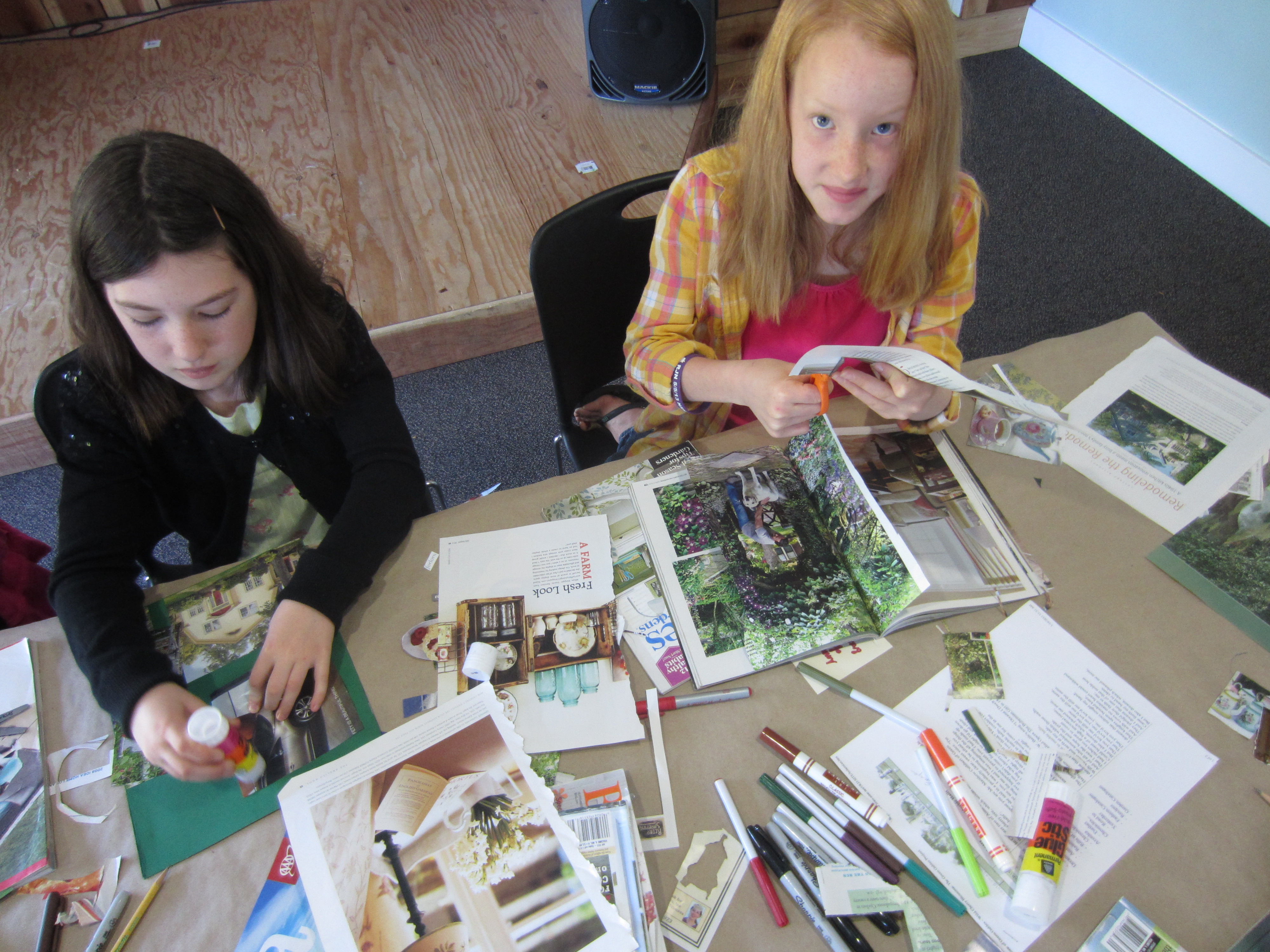
(The title of the book can be written on card stock and glued on, or it can be pieced together from letters and words in the magazines, ransom-note style.)

Hunting and clipping and gluing also offers the perfect space to share music from the book (see our Learning Links section), or to talk about our favorite scenes.

As a final step, have the kids paint their finished collage with Mod-Podge® and set it aside to dry. Make sure the glue gets under all the elements, so that the collage lies flat with no flyaways!

LitWits makes a small commission on supplies or books you buy through our Amazon affiliate links.
Creative Teaching Idea #6
Chapter 15
Anne had so many lessons to learn, and made so many mistakes! No problem—she (and your kids) can “start over with a clean slate.” In this activity, kids create this highly symbolic object while learning its origins and what it stands for in this story.
This simple craft requires only a little bit of preparation and is easy to explain and do. Because you’ll need about 30 minutes for the paint to dry before reframing and conditioning the chalkboards, plan to do this project in two short parts, with a break (or another activity) sandwiched in between.

SUPPLIES
8” x 10” (or so) diploma-type wooden frames, one per child. We found ours at a “dollar store,” but they're also available on Amazon.
chalkboard paint, available at any craft or building-supply store, and on Amazon
chalk and an eraser or rag
marker – use silver if the back of the frame is dark
PREP
Open the backs of the frames and remove the glass and paper inserts; you won’t need them. Set the board or cardboard backing back inside the frame, but don’t secure the fasteners on the back. This will be your chalkboard surface. (For safety reasons, use the cardboard instead of the glass.)
Cover the table with several layers of newspapers or plastic-backed tablecloth.
Pour the paint into serving-size containers.
SETUP
Symbolism: Ask the kids what the slate in the story might stand for, besides Anne's temper. Here are a few possible answers:
the importance of learning from (and then erasing) mistakes
Anne’s first interaction with Gilbert Blythe
her years of study and determination to learn and to earn high marks
her eventual vocation of teacher
History: Show this video about the origin of slate pencils and slates, which also discusses the use of a slate:
Explain the project and show your model, then read the inspiration.
INSPIRATION
“Mr. Phillips said my spelling was disgraceful and he held up my slate so that everybody could see it, all marked over. I felt so mortified, Marilla [. . .]” – Ch. 15
Gilbert reached across the aisle, picked up the end of Anne’s long red braid, held it out at arm’s length and said in a piercing whisper:
“Carrots! Carrots!”
Then Anne looked at him with a vengeance!
She did more than look. She sprang to her feet, her bright fancies fallen into cureless ruin. She flashed one indignant glance at Gilbert from eyes whose angry sparkle was swiftly quenched in equally angry tears.
“You mean, hateful boy!” she exclaimed passionately. “How dare you!”
And then – wack! Anne had brought her slate down on Gilbert’s head and cracked it – slate not head – clear across. —Ch. 15
DIRECTIONS
Part 1
Hand out the frames and cardboard inserts. Ask the kids to write their names on the back with a marker.
Explain that they’ll be removing the cardboard from the frame, and painting the front with chalkboard paint.
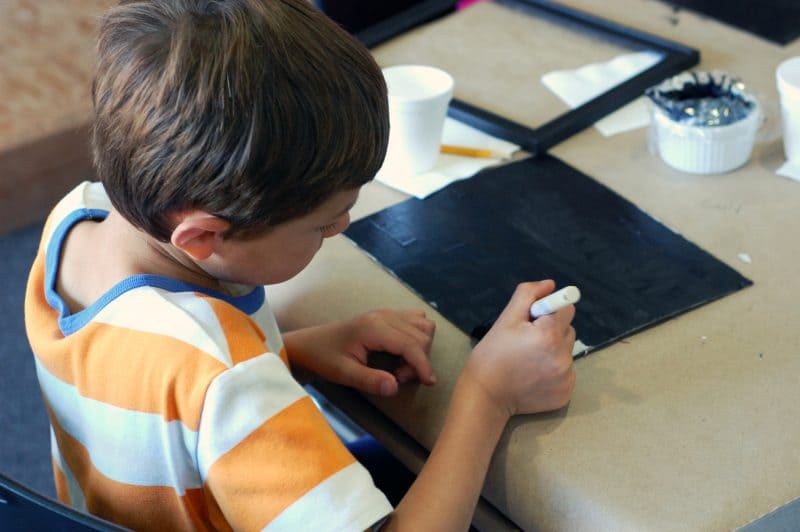
Here's a demo of the process:
Let the slates dry for about 30 minutes while taking a break or doing another activity. You might use this time to talk about how much Anne changes by the end of the book, and in what ways she's still the same Anne.
Part 2
Demonstrate how to fit the painted boards back inside the frames and fasten them. Here's a video to help:
Tell the kids that in 24 hours they’ll be able to condition the boards with chalk. Show them how to condition it by covering it with a piece of chalk held sideways, then erase the board.
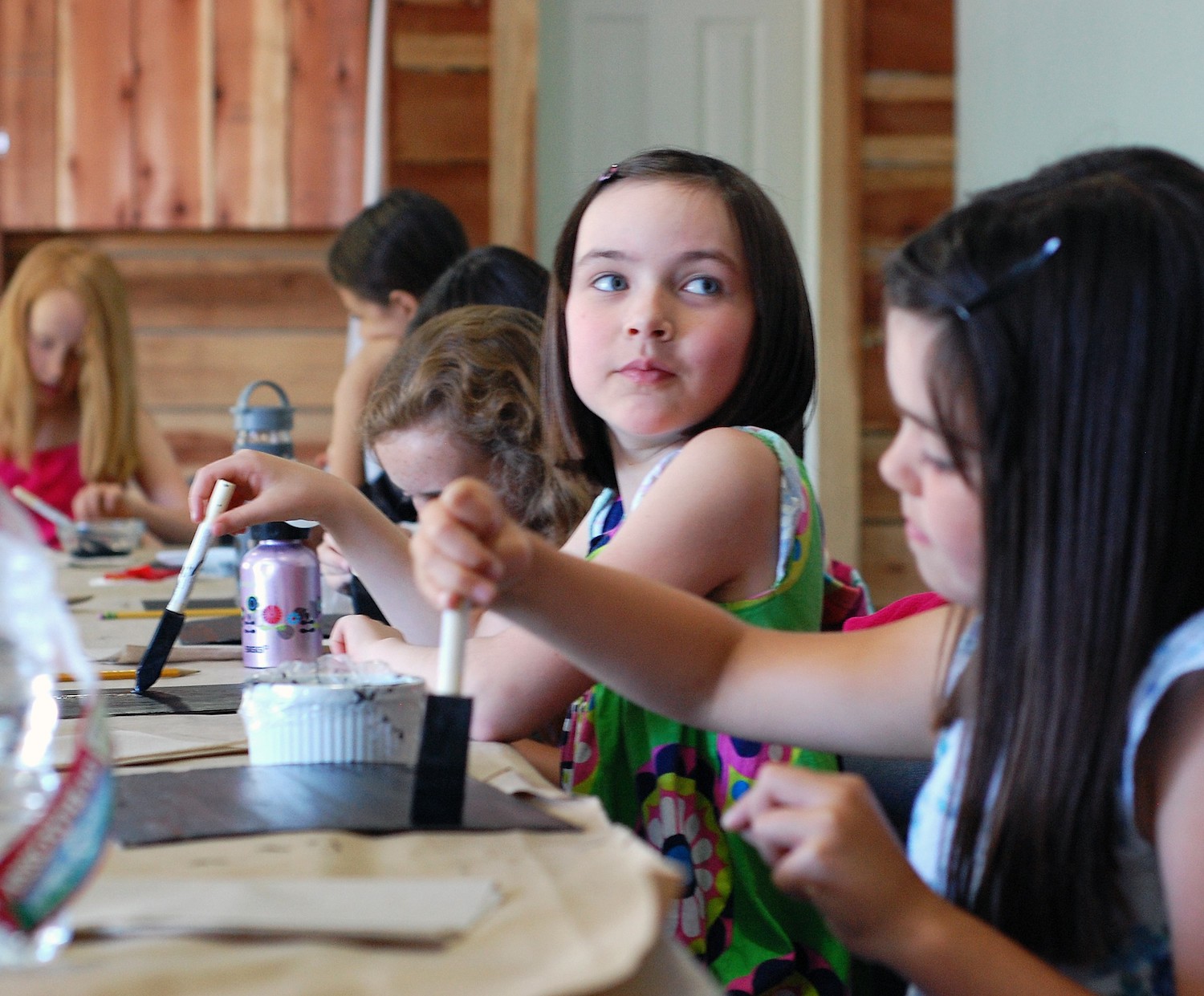
LitWits makes a small commission on supplies or books you buy through our Amazon affiliate links.
Creative Teaching Idea #7 (BookBites)
Chapters 16 & 21
Anne’s disastrous hostessing experiences provide plenty of ideas for relevant snacks. Of course you must serve "raspberry cordial"—but in this activity, kids get a taste of Anne's awful cake too (or so you'll lead them to think), while empathizing with her embarrassment.
SUPPLIES & PREP
Invitation (optional): Write up a fancy Victorian invitation to give to each child, or use the one in our printables set.
Frummery (optional): Since Marilla allows Anne to decorate the table with "frummery" after all, you might like to provide your kids with real or faux ferns, roses, and other foliage to decorate their own place setting (or a whole table, if you're sitting together).

Raspberry cordial: Storebought raspberry juice, enhanced with fresh berries, represents the mistake that cost Anne Mrs. Barry's approval, and many precious hours with Diana. If you'd like to make the real thing like Marilla did, here's a recipe.
Sponge cake: The kids will guess that cordial is on the BookBites menu, but not the accidentally-liniment-flavored cake Anne served Mrs. Allan, from Chapter 21. Make or buy a regular angel food or pound cake, then slice and fill it with raspberry jam, and frost it with jam–flavored icing (canned is fine!).
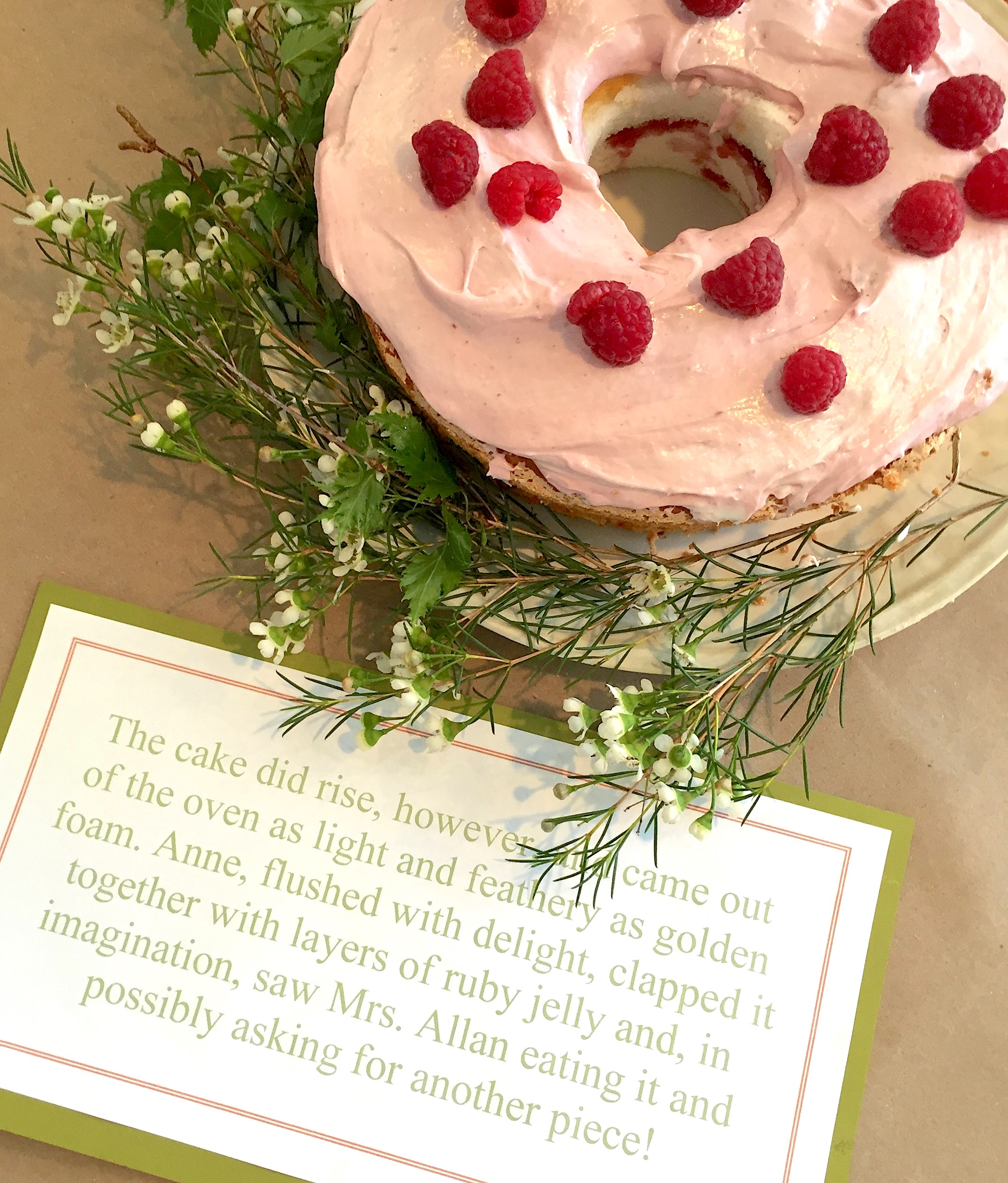
Now cut and remove one slice of cake and douse it with liniment—just for smelling, of course. Keep this piece on a separate plate. 😅
In the classroom, be sure to have the bottle of liniment and a bottle of vanilla extract nearby, ideally poured into some unlabeled old fashioned bottles.
SETUP
Tell the kids you'd intended to bake them a vanilla-flavored cake, to represent Anne’s sincere efforts to do the right thing with care and diligence. However—and here you hold up your bottles of liniment and vanilla with a sheepish grin—you did indeed (so you'll say) make the very same mistake that Anne did. Your props had been close at hand as you baked, and you had confused the two bottles.
Then you'll sadly passed around a piece of the spoiled, would-be cake for them to smell. Convinced of your Anne-ish error, they'll resign themselves to missing out on cake.

But you'll quickly regain their confidence and adoration by producing your untainted, delicious cake—minus one slice!
(Once when we taught this workship, Becky was at the back of the classroom during snack time, having cut slices of the good cake for the two of us, when she accidentally picked up the slice of BAD cake and took a big bite. The face she made was exactly like the one Mrs. Allan must have made. The irony of this was intensified by the fact that, like Mrs. Allan, she’s a minister’s wife.)
Between bites and sips, read parts of Marmion and Lady of the Lake, and sing “Nelly of the Hazel Dell,” the 1853 song that Diana teaches Anne. It’s actually quite morbid—and perfectly suited to Anne’s dramatic nature—so exagerrated performances make the song a little more lighthearted and funny.
INSPIRATION
Raspberry cordial
When Anne came back from the kitchen Diana was drinking her second glassful of cordial; and, being entreated thereto by Anne, she offered no particular objection to the drinking of a third. The tumblerfuls were generous ones and the raspberry cordial was certainly very nice.
“The nicest I ever drank,” said Diana. “It’s ever so much nicer than Mrs. Lynde’s, although she brags of hers so much. It doesn’t taste a bit like hers.”
[ . . . ]
“Mrs. Lynde was up to see Mrs. Barry today and Mrs. Barry was in an awful state,” [Anne] wailed. “She says that I set Diana drunk Saturday and sent her home in a disgraceful condition. And she says I must be a thoroughly bad, wicked little girl and she’s never, never going to let Diana play with me again. Oh, Marilla, I’m just overcome with woe.”
Marilla stared in blank amazement.
“Set Diana drunk!” she said when she found her voice. “Anne are you or Mrs. Barry crazy? What on earth did you give her?”
“Not a thing but raspberry cordial,” sobbed Anne. “I never thought raspberry cordial would set people drunk, Marilla—not even if they drank three big tumblerfuls as Diana did. Oh, it sounds so—so—like Mrs. Thomas’s husband! But I didn’t mean to set her drunk.”
“Drunk fiddlesticks!” said Marilla, marching to the sitting room pantry. There on the shelf was a bottle which she at once recognized as one containing some of her three-year-old homemade currant wine for which she was celebrated in Avonlea, although certain of the stricter sort, Mrs. Barry among them, disapproved strongly of it. And at the same time Marilla recollected that she had put the bottle of raspberry cordial down in the cellar instead of in the pantry as she had told Anne. —Ch. 16
Sponge cake
Mrs. Allan took a mouthful of hers and a most peculiar expression crossed her face; not a word did she say, however, but steadily ate away at it. Marilla saw the expression and hastened to taste the cake.
“Anne Shirley!” she exclaimed, “what on earth did you put into that cake?”
[ . . . ]
Anne fled to the pantry and returned with a small bottle partially filled with a brown liquid and labeled yellowly, “Best Vanilla.”
Marilla took it, uncorked it, smelled it.
“Mercy on us, Anne, you’ve flavored that cake with Anodyne Liniment. I broke the liniment bottle last week and poured what was left into an old empty vanilla bottle. I suppose it’s partly my fault—I should have warned you—but for pity’s sake why couldn’t you have smelled it?” – Ch. 21
The kids will be delighted to learn that this actually happened, in "real life:" The author's landlady once made this sake mistake, and served the cake to a man who enjoyed it--or pretended to!
LitWits makes a small commission on supplies or books you buy through our Amazon affiliate links.
Creative Teaching Idea #8
Chapter 17
One of the gifts Anne receives from her classmates is a "bedizened" slate pencil, from Charlie Sloan. A what what? This activity gives kids a chance to get their hands on an unusual object from the story, learn its history, decorate it in a gaudy fashion, and at the same time "do" a fabulous vocabulary word!
We rarely, if ever, hear the word bedizen these days. But isn't it a great one? Kids love putting it to good use and going home with an authentic story souvenir.
INSPIRATION
Charlie Sloane's slate pencil, gorgeously bedizened with striped red and yellow paper, costing two cents where ordinary pencils cost only one, which he sent up to her after dinner hour, met with a more favorable reception. Anne was graciously pleased to accept it and rewarded the donor with a smile which exalted that infatuated youth straightway into the seventh heaven of delight and caused him to make such fearful errors in his dictation that Mr. Phillips kept him in after school to rewrite it. […]. —Ch. 17
SETUP
Read the quote about Charlie Sloane's slate pencil, above, and ask the kids if they can figure out what "bedizen" means from the context. (This activity pairs well with (but doesn't require) the vocabulary worksheet in our printables set, which teaches kids bedizened and three related words, so they can bedizen their language skills.)
Whether you do that worksheet or not, define bedizen for the kids and ask:
Why would this have been an extra special gift to receive?
What does it tell us about Charlie's feelings for Anne?
Tell the kids they'll get to try their own hand at bedizening a slate pencil, just as soon as they learn what a slate pencil is and where it came from:
DIRECTIONS
Provide the pencil and materials listed below, and let them go to town (or school, anyway)! Be prepared for lots of sparkles, surprising color combinations, and impractical placement of doodads. It's all good.

SUPPLIES

Optional: the vocabulary worksheet in our printables set
Optional: striped red and yellow bedizening paper like Charlie Sloane's, in our printables set
pipe cleaners, sequins, ribbons, “jewels,” and other decorative doodads
glitter
glue
pencils: you can bedizen ANY pencil, but for as much authenticity AND novelty as possible, you might want to search online for antique slate pencils. These are very similar to the one described in the book, on Etsy:
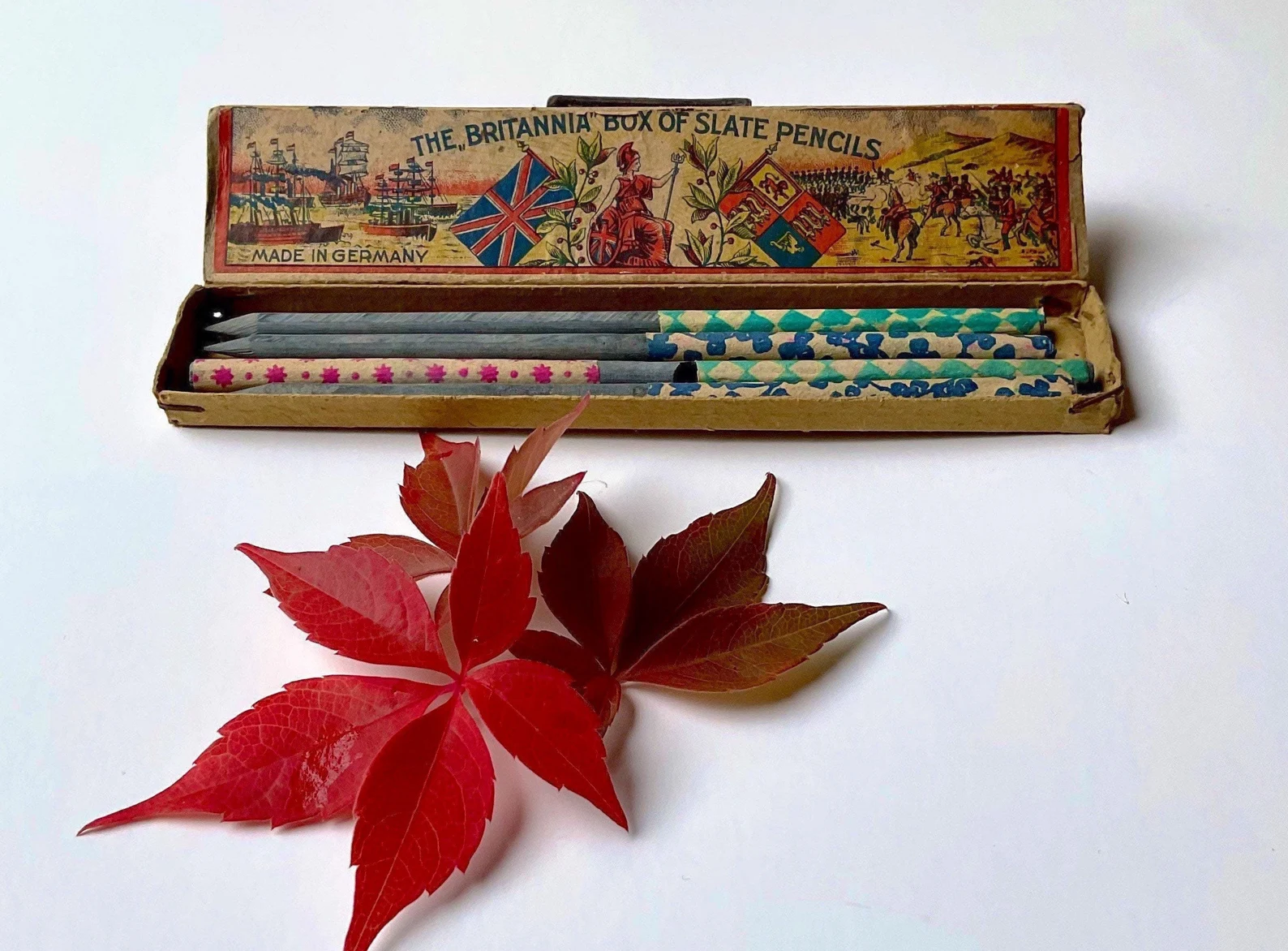
Here's a pencil that only writes on real slate (authentic) and is available through Amazon:
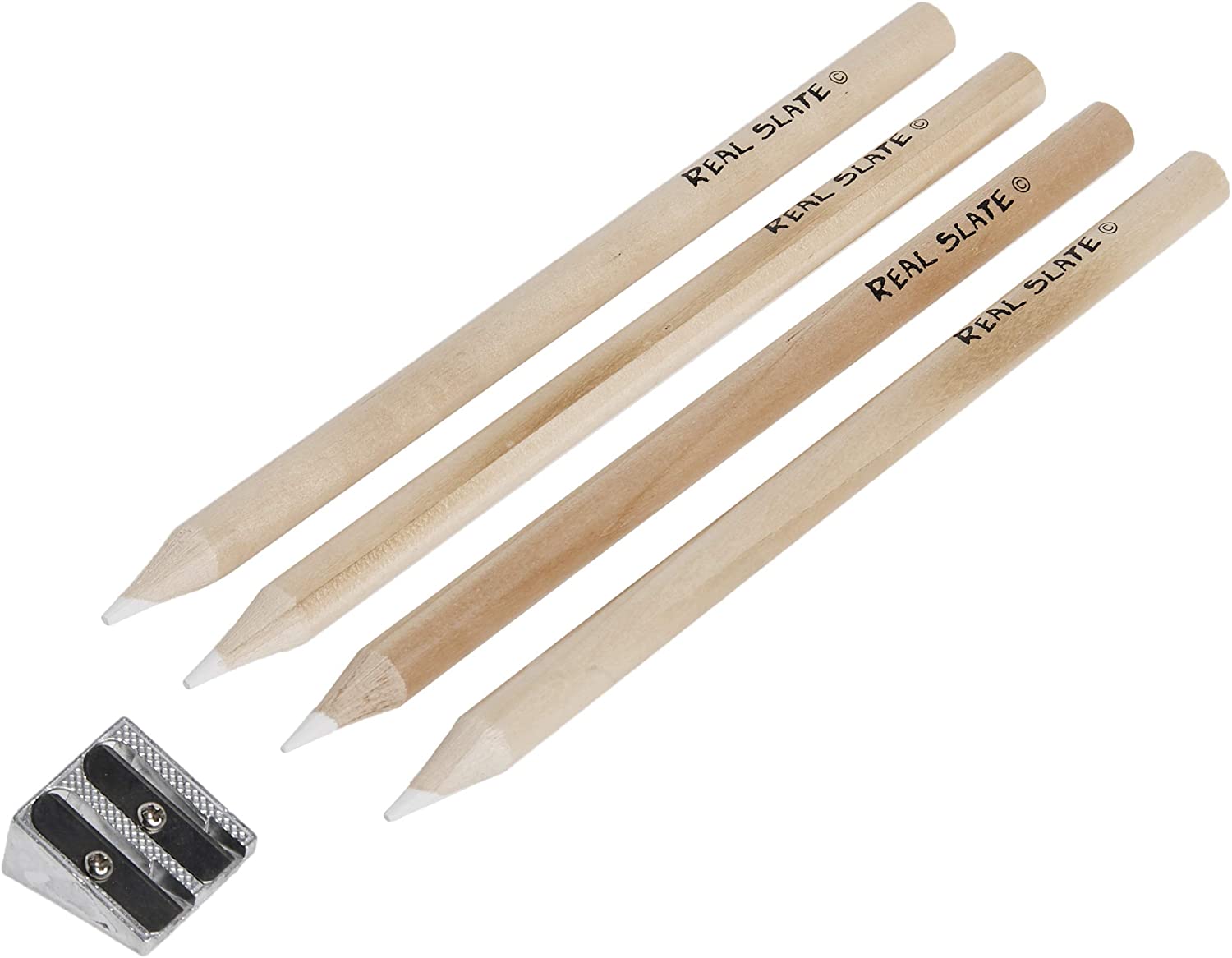
For more "bedizening" surface area, you might choose carpenter pencils, like this, available at your local hardware store or through Amazon:

LitWits makes a small commission on supplies or books you buy through our Amazon affiliate links.
Creative Teaching Idea #9
Chapter 17
At the peak of Diana's misery, when she and Anne are forbidden to speak because of the infamous Raspberry Cordial Incident, she makes a "bookmarker" for Anne. In this activity, kids get to do what Diana did, and share it with a friend of their own.
A literary project that makes a great literary gift, based on a literary gift that makes a great project—this little bookmarker packs a lot of meta! t
INSPIRATION
...The next morning a note most fearfully and wonderfully twisted and folded, and a small parcel were passed across to Anne.
“Dear Anne," ran the former, “Mother says I’m not to play with you or talk to you even in school. It isn’t my fault and don’t be cross at me, because I love you as much as ever. I miss you awfully to tell all my secrets to and I don’t like Gertie Pye one bit. I made you one of the new bookmarkers out of red tissue paper. They are awfully fashionable now and only three girls in school know how to make them. When you look at it remember
Your true friend,
Diana BarryAnne read the note, kissed the bookmark, and dispatched a prompt reply back to the other side of the school.
-Ch. 17
SUPPLIES
scissors and glue
6x6 paper—origami or the floral paper included in our printables set
friendship/reading quotes, either your own or the quotes in our printables set—we've also included the excerpt, in case you'd like to have the kids mat it as a tag for a literary gift.
DIRECTIONS
It's easiest to show the kids our video, below.
LitWits makes a small commission on supplies or books you buy through our Amazon affiliate links.
Creative Teaching Idea #10
Chapter 21
How could Anne have possibly served liniment-flavored cake to the minister’s wife? In this activity, kids get to smell the difference between liniment and vanilla, which will make them question (and answer) how that ever happened.
Young readers might ask how Anne could have made such a dumb mistake—but Anne had a cold, remember? The experience of comparing the two helps kids get into Anne’s (stuffed-up) head, and into her setting, too. Like Anne, they’ll learn first-hand lessons all through her story, by using — not losing — their senses and imagination.
This activity pairs well with our BookBites activity, "Get a sip and a bite of Anne's mistakes." :)
DIRECTIONS
Pour a good helping (or dose) of of liniment and vanilla extract into old fashioned bottles. Don't label them —let the kids smell each and discover the difference for themselves. The faces they make are half the fun!
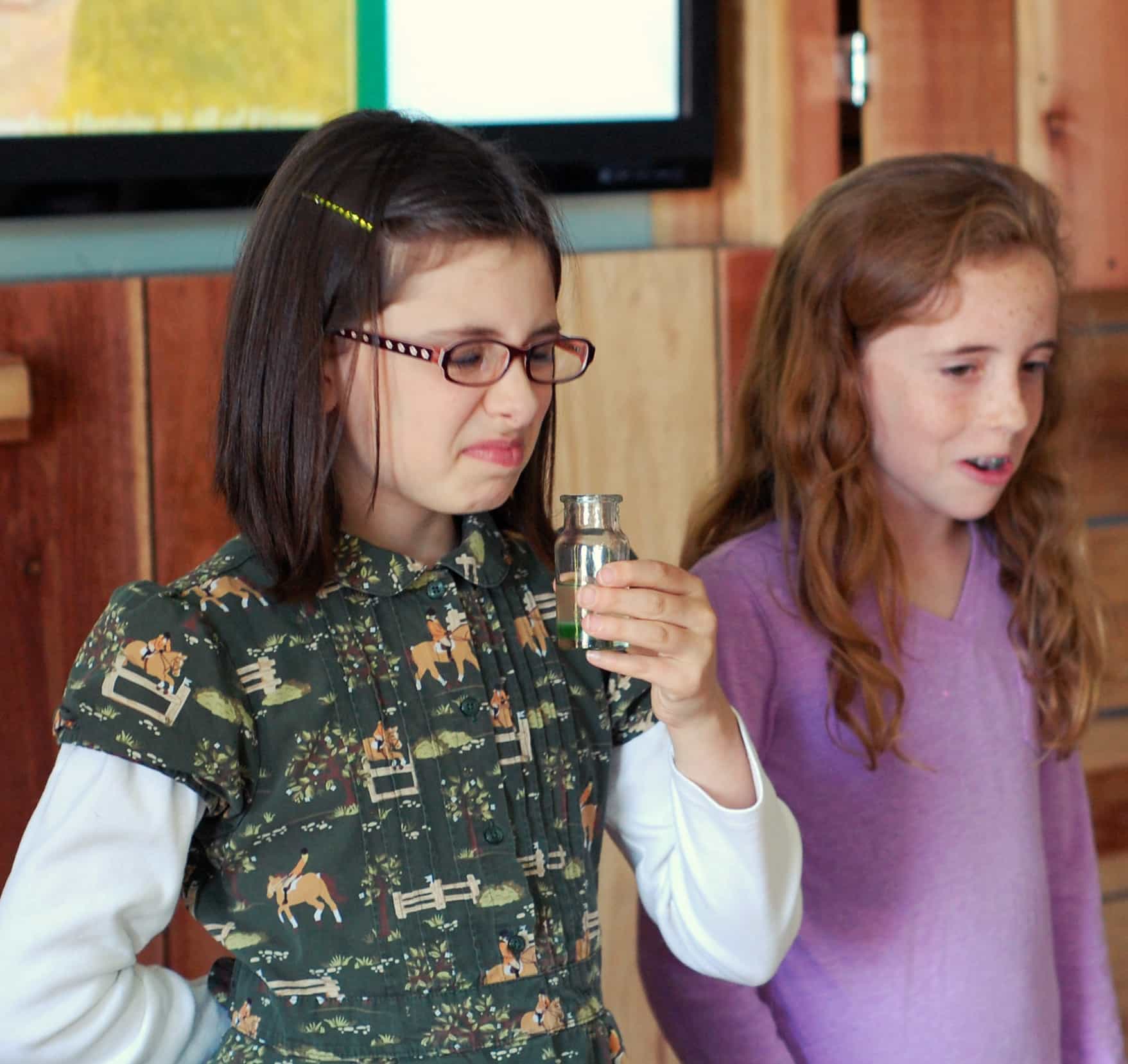
LitWits makes a small commission on supplies or books you buy through our Amazon affiliate links.
Creative Teaching Idea #11
Chapter 24
Miss Stacy's assignment to write a composition "on some remarkable person" begs to be assigned again! In this activity, kids get to honor someone special by considering his or her finest qualities, and admiring them in writing.
Anne has NO IDEA how remarkable she already is—let alone how remarkable she''ll be for millions of readers! There are plenty of budding Remarkables among us, and more in already in bloom.
INSPIRATION
I love writing compositions. Mostly Miss Stacy lets us choose our own subjects; but next week we are to write a composition on some remarkable person. It’s hard to choose among so many remarkable people who have lived. Mustn’t it be splendid to be remarkable and have compositions written about you after you’re dead? Oh, I would dearly love to be remarkable.” —Ch. 24
SETUP & DIRECTIONS
Read the inspiration, above, and tell your kids this is their chance to take on Miss Stacy's assignment, and write about a remarkable person they admire.
Talk about the meaning of the word remarkable, and ask the kids who in their lives stands out for being "uncommon" or "extraordinary." Invite them to talk about people they know who meet the definition, in positive ways.
Then have the kids choose a Remarkable Person, and list at least three remarkable qualities. Ask them to think of things their RP does that prove those qualities. (This activity pairs well with the characterization handout in our printables set, which is an exercise in "showing not telling" what someone is like.)
Once they've done that, have them write an essay about their Remarkable Person, including examples that reveal that remarkableness.
When they've finished, invite volunteers to read their compositions aloud.
You might let all your kids know that if they want to give or read their composition to their Remarkable Person, he or she would never forget it.
For older kids, you might ask them to research the author and write about her. (That's her below, in 1935; see our Learning Links for plenty of resources.) After all, it wasn't just Lucy Maud Montgomery’s imagination that gave us Anne; it was her life experiences. The connections between her and Anne are innumerable and intriguing, and the research will help kids see that creating art comes from living life—and that they too could someday share their life in fiction.

LitWits makes a small commission on supplies or books you buy through our Amazon affiliate links.
Creative Teaching Idea #12
Order, order! Without it, there's no story—just jumbled miscellaneous parts. This activity kids learn the important concept of the narrative arc (useful for all communications!), and understand how L.M. Montgomery arranged Anne of Green Gables.
You can discuss the narrative arc in any of these three ways; we've found the first to be the most engaging, because it breaks up the discussion into bite-size chunks.
Introduce the concept of the narrative arc up front, but save the story's scenes to discuss as you go, pausing to "do what the characters did" in fun hands-on ways, while weaving in discussions and other worksheets.
OR introduce the concept and complete the worksheet before the activities, so kids have a review of the story fresh in their heads first, and you can remind them "where we are" on the arc as you go.
OR at the end of your activities, introduce the concept, then help kids figure out where the different parts of this story fit on it.
The narrative arc worksheet in our printables set summarizes the story by plot point, and has kids fill in some blanks.
Creative Teaching Idea #13
We all love collecting souvenirs that remind us of remarkable places we've been. Give your kids a travel sticker commemorating their literary journey through Avonlea, and your field trip through Anne of Green Gables!
Give the kids the souvenir travel sticker included in our printables set, or have them design their own.
Kids might like to add their sticker to a reading kit, like an old briefcase (or faux vintage) or a suitcase that can hold a book, bookmark, glasses, snack, blanket, journal, pen, and whatever!
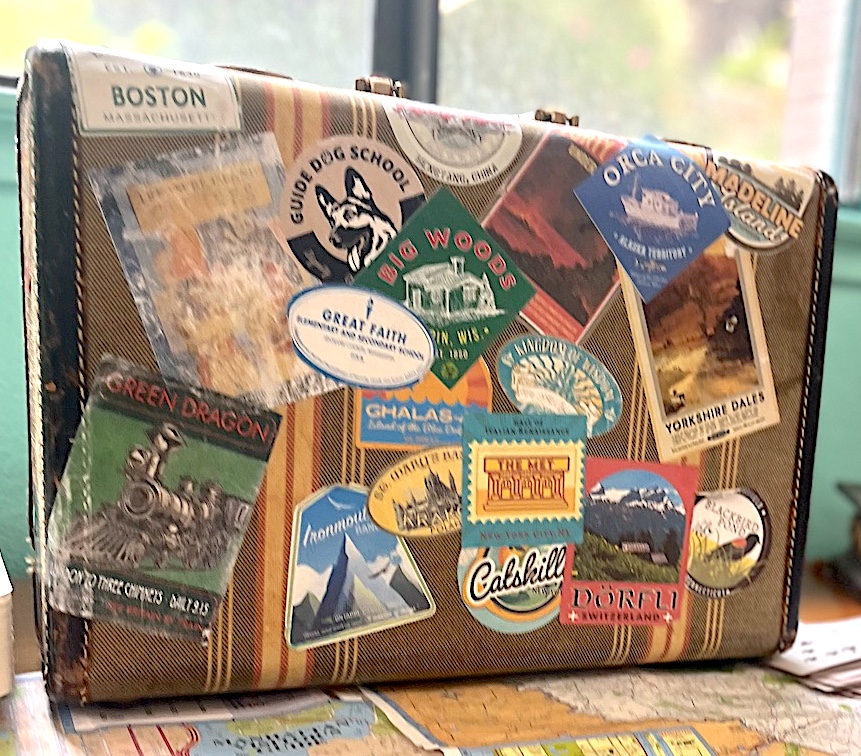
Or they might want to put it on a binder or water bottle. No matter where they see their sticker later, it will remind them of this wonderful journey they've taken with you!
LitWits makes a small commission on supplies or books you buy through our Amazon affiliate links.
Some of our activity ideas need printables or worksheets. Don't spend hours coming up with your own!
for teaching Anne of Green Gables by L.M. Montgomery
Borrow or buy the book, if you don't already have it; you can also listen to a BBC-dramatized audio version. Reading on a screen should be a last resort. The sensory feel of the pages in your hand, or the sound of someone reading to you, is the first important step in sinking into the sensory experience of this story.
This book is great for ALL ages, if you read it to the younger ones. (You can read reviews on Amazon). Here's our short summary of the story:
When the orphanage sends the Cuthberts a pale, redheaded girl instead of a sturdy farm boy, they know she’ll just have to go back. After all, they had decided to adopt because they needed farm help—a strong, sturdy boy—not a girl, and especially not such a dreamy, talkative one (whose imagination and temper sometimes get the best of her)! But neither Matthew nor his sister Marilla can resist Anne’s charms, and the longer she stays at Green Gables, the less it’s possible to imagine life without her. No one who meets Anne of Green Gables, on Prince Edward Island or on the page, can ever forget her!
LitWits makes a small commission on supplies or books you buy through our Amazon affiliate links.

You can have them read or listen to it on their own, or you can enjoy it together as a class. Most importantly, read only for fun! Tell the kids to simply enjoy the book, without any assignments in mind. It's hard to get caught up in a story if you're supposed to be looking for something that takes you out of it.

It's helpful to know this book's big teaching points ahead of time, and explore some fascinating links to add to your lessons. We already found those for you, so you too could enjoy reading the book without an assignment in mind. :) Our teaching ideas connect to these takeaway topics:
The Power of Imagination
Whether Anne's rapturously imagining beauty or failing to temper her visions with solid judgment, she shows us what power the imagination can wield. And not just for fantasizing, but as a coping skill to calm, or as a way in to problem-solving. Inventors, engineers, architects, doctors, teachers, even lawyers come up with their best ideas when they think “outside the box.” Anne helps us what a difference our thoughts make, to us and others.
That's why this book is one of our favorite books for building character in kids.
The Need for Self-Discipline
From the moment we meet Anne we see she has a good heart, vivid imagination, and strong spirit. But at the moment Anne meets Mrs. Lynde, we see that her spirit is untempered by self-control. This point gets physical when Anne cracks her slate on Gilbert's head. But Anne learns that passion with self-control can help her reach her goals. Her increasing self-discipline contributes to her academic and career success — and her selfless decision to give it up for Marilla’s sake.
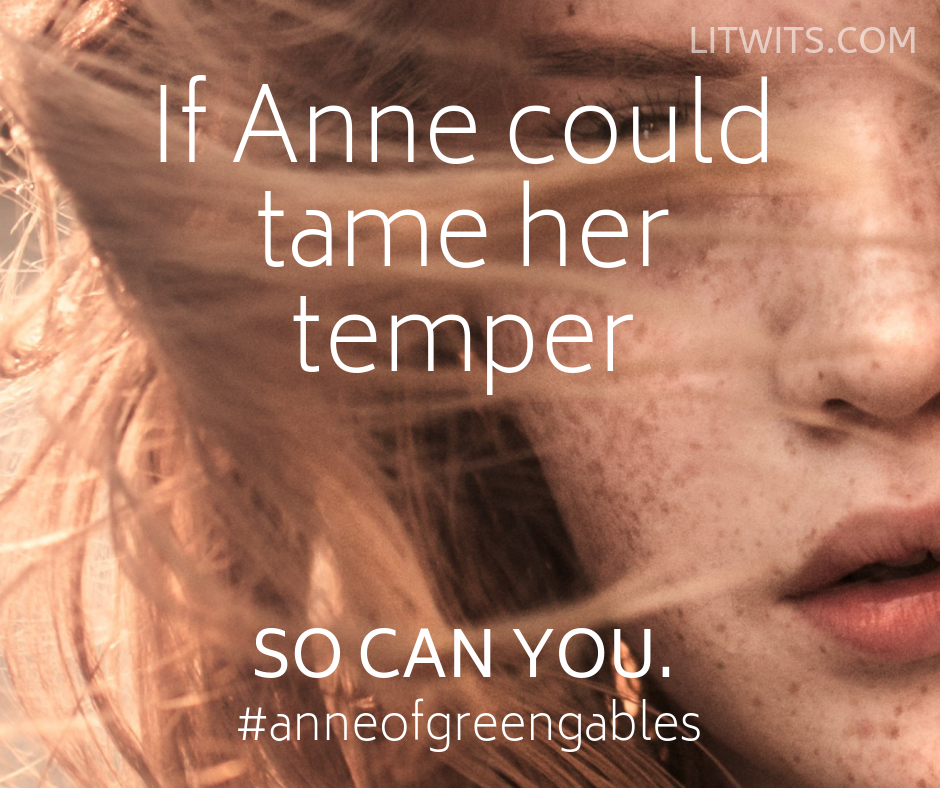
Art Imitates Life
Lucy Maud Montgomery, who went by Maud (no e!) is on every page of her book-—not just as its author but as its heroine. (Watch our short biography of her right on this page or on YouTube.)Many of Anne's experiences were first Maud's, and both of them were always avid readers. (The LM Montgomery Institute at the University of Prince Edward Island has a wealth of biographical information online, and you'll find more in our Learning Links.) Kids learn that a great book is packed with real life—especially if the author's real life was packed with great books.
Additional topics
We encourage you to explore the supportive Learning Links at the end of this page, especially if you have older or more advanced kids. Make notes as you go, so you’ll remember what you want to share, and when.

Once you've read the book and have a feel for its big ideas, decide which activities to do. Don't feel you need to do them all! Choose one or two or whatever you think will best suit you and your kids. Having said that, here's a sample agenda for a 3-hour "field trip" through a great book.
This sample agenda can be followed in part or in whole, all at once or over weeks—whatever works for you.
Set the tone. Ask the kids how this book made them feel, and why, and what it made them want to do. Point out that the author intended to make readers feel, think, and act—that literature is never just entertainment.
Introduce the author. Next, introduce the author through the biography video provided, to pay tribute to the story’s creator and recognize how his/her life story shows up in the book.
Introduce the arc. Give a brief overview of the concept of the narrative arc (here's our explanation for kids). Assure the kids you'll go through it in detail together.
Find the setting. Get your bearings before you set off! Explore the setting through audiovisual aids, and talk about any setting-specific props,
GET HANDS-ON ! Do the activities you've chosen (we do them in story order, for the most part, but do whatever holds your kids' interest.) Talk about the meaning(s) embedded in each project. Pass around props at relevant points to give the kids a tactile, sensory engagement with a significant item, including food and sounds. Look for moments to pop in an audiovisual—hear that medieval chant! watch that Friesland horse run!
Worksheets: If you're using our worksheets, we suggest weaving them in between activities, to keep the writing light and energy high. This woven blend of doing, talking, and writing is what helps lessons stick, and makes this book more meaningful and memorable for your kids.
Timing: This means you're doing a new activity every 10-20 minutes, so things move quickly and the energy stays high. Of course, if your kids would benefit from a slower pace, by all means take your time. The point is to keep everyone relaxed and having fun—so they're better able to learn. Do whatever best serves your teaching needs, in the order and at the pace that keeps your kids respectfully, happily engaged.
Gather or buy your supplies. You can right-click anywhere on this page to print lists and instructions, if you'd like a hard copy—you'll need to open up the "Read more" drop-downs first.
Do the activity prep you'd rather handle yourself than have your kids do; this will depend on your time, kids' ages and abilities (and how important it is to you that the finished project looks as intended!).
Print the printables you're using, whether you made them or bought our set. Which brings us to . . .
Don't spend hours creating worksheets and printables to use with our activity ideas. We've already made those for you!
Buy our full set, for just about nothing.
Be sure to let us know how it goes! In fact, if your kids have a blast with this book, we'd love your help spreading the word about our resources for teaching children's literature.
Tag and follow us on Instagram, YouTube, Facebook, and Pinterest—and if you find our resources and materials helpful, please leave a review!
for teaching Anne of Green Gables by L.M. Montgomery
Aw, you’re just the right age, whatever that might be! Just kidding—we know what you mean. We find that 8-12-year-olds are consistently “ready to LitWit.” Generally speaking, their reading level is high enough to take on the vocabulary and syntax of literature, and they’ve acquired enough knowledge to grasp new ideas. Yet they’re still full of wonder, and are highly responsive to the “check this out!” nature of sensory immersion.
However, we often have mature kids of 6-7 in our experiential workshops, and sometimes fun-loving kids of 13-14. As a teacher or parent, you know best what your kids are ready for and interested in.
Yes. Our methods and ideas are adaptable to a wide range of abilities—kids particpate at their own level. The point isn't to come up with a stellar work of art or a perfectly polished project, but to have the experience of doing something the characters did, or a spin on it. After all, those characters were of mixed abilities, too!
This is true of mixed levels of enthusiasm as well. Kids who already love reading are thrilled to get the chance to extend the story, and kids who don't yet believe that stories are fun end up wanting to read (or listen to) more great books.
LitWitting is a flexible, fun way to teach, adaptable to all ages and abilities, so there isn't "one way to do it" —every educator's circumstances and children are different. Having said that, we suggest you follow the narrative arc, and we've provided an example of a simple plan above, under Prep Tips.
But the truth is, if you and your kids are having fun, and when it's over they want more (which means reading another great book), you’re doing it right!
Absolutely—but when you're finished, they'll probably ask if there's something else you can do, or have a suggestion of their own! And that's GREAT! It shows they're liking this kind of learning, and seeing that books can be experiences for them too, not just for the people in the story.
Get your feet wet with a project you think they'll like best, never mind how deep and meaningful it is—even if they're "over" this book, if they know you'll be LitWitting other books, they'll want to read them!
In our workshops, the very most reluctant readers are the ones who, when their mom comes to pick them up, are tugging at her sleeve and saying "sign me up for the next book they're doing!" (We love that they always say "doing!").
They're right here on this page! Just click the "Read more" under each activity for all the details.
You can right-click to print this page, if you'd like a hard copy—be sure to open all the drop-downs first, so the hidden contents will print too.
We keep all this info online so we can include helpful links, make updates in real time, add new ideas, and let you use our materials on a screen.
Sure you can, for your noncommercial use in your family, classroom, library, book club, or wherever! As long as you’re not calling your fun time a “LitWits” event or charging a fee, you can use our ideas and printables to do lots of wonderful things!
Please don’t forward your printables or make copies for people who haven’t paid for them, of course, out of courtesy and to honor our copyright, and per our Terms of Service.
Did you find what you were looking for? Do you still have a question? Are you feeling inspired, but maybe also somewhat overwhelmed? Never fear—we're glad to help! You're literally on our page about inspiring kids to read more, and we'd love to support you as you change the world, one book at a time.
Happy teaching,
Becky and Jenny
Sisters, best friends, and partners
for teaching Anne of Green Gables by L.M. Montgomery
Like all children's literature, this book is chock-full of many subjects to explore—from the origins of wincey fabric to the history of Nova Scotia and more! Browse these curated links to supplement your reading experience, research points of interest, and prompt tangential learning opportunities.
About the Book & Author
The LitWits video mini-biography of L.M. Montgomery
The LitWits Blog: this book is one of our favorite "Great Books for Building Character in Kids"
Information about and images of L.M. Montgomery (LM Montgomery Institute, University of PE Island)
Full bibliography (LMMI, U of PEI)
Interactive map of PEI - sites related to the author (LMM, U of PEI)
Covert art in 20 languages (LMMI, U of PEI)
"75 Facts You Might Not Know" about AGG/LMM (CBC/Radio-Canada)
Interesting article about orphan trains of the 1900s, when children were sent to farms in Canada
Beyond the Book
The locale
About P.E. Island
Prince Edward Island map
Drone flyover of PEI, with music (PEI govt)
Image of Green Gables
About the real “Lake of Shining Waters”
Panorama of Green Gables farm and grounds
Images of and information about Green Gables
Virtual tour of Green Gables House
Image of Anne’s bedroom at Green Gables
The Anne of Green Gables itinerary on Prince Edward Island
Prince Edward Island National Park
Other
Information about the Battle of Culloden in Scotland, from which many Scots emigrated
Fan site for the movie version containing blogs, games, and contests
Anne of Green Gables Cookbook* – make your own raspberry cordial! written by LM’s granddaughter
About Alexander Graham Bell and his inventions (Biography.com)
About Thomas Edison (Biography.com)
Story Supplements
Objects and events
THE Raspberry cordial recipe
Old ad for hair dye – perhaps the one Anne used
All about croup
Wonderful site about 1900s dressmaking – including puffed sleeves
About ipecac
History of slate pencils and slate (video)
Versions of the book’s songs (or music of the place or period)
Marble Halls (Amazon - listen to free sample or buy the song/CD)
Hazel Dell (Victorian Web)
Chopsticks (Warner Chappell)
When I Was A Lad I Served A Term" (from Gilbert & Sullivan's HMS Pinafore - on YouTube)
“Time Was When Love And I Were Well Acquainted" (from same show - on YouTube)
On hearing the first Cuckoo in spring (Symphony Nova Scotia)”
Intro to the music of Cape Breton, Nova Scotia
Traditional music of Nova Scotia
"The Prince Edward Island Style of Fiddling" - Fiddlers of Western PEI
Literary allusions
"The Highwayman" by Alfred Noyes - (YouTube)
An excellent synopsis and history of Marmion by Sir Walter Scott, with links to e-texts (Edinburgh University)
The Lady of Shalott by Alfred Tennyson, e-text
“The Lady of Shalott” song performed by Loreena McKinnett with lyrics (Youtube)
Famous J. Waterhouse painting of the Lady of Shalott (Tate Museum)
Mary Queen o’ Scots broadside, with background